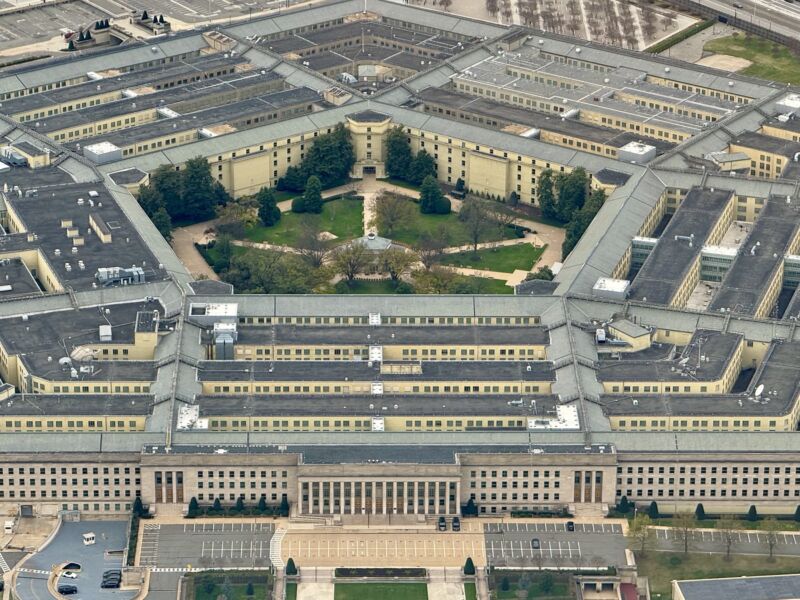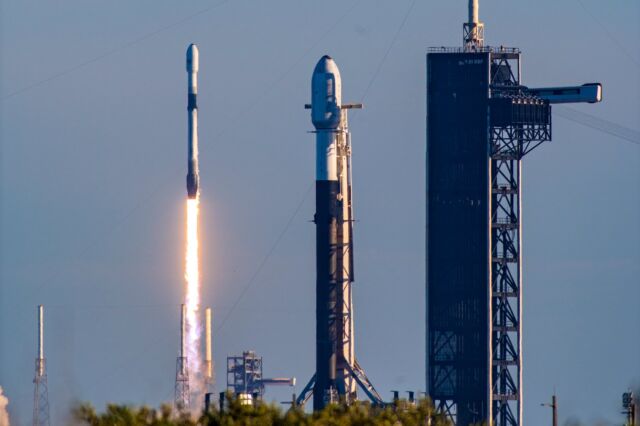
Enlarge / Aerial view of the Pentagon on March 31.
Photo by Daniel Slim/AFP via Getty Images
A strategy document released by the Pentagon this week lays out where the US military can most effectively rely on the commercial space industry and what missions should remain in government hands.
“This marks a new effort to harness the remarkable innovation of the commercial space sector to enhance our resilience and strengthen integrated deterrence as a department,” said John Plumb, assistant secretary of defense for space policy.
The Space Force already buys a lot from the commercial space industry. The military doesn’t build or own satellite launch vehicles—those come from commercial companies. While the Space Force operates government-owned reconnaissance and surveillance satellites, it also buys supplementary data and imagery from the commercial industry.
“To protect our men and women in uniform and to ensure the space services they rely on will be available when needed, the department has a responsibility to leverage all tools available, and those tools include commercial solutions,” Plumb said Tuesday. “From launch to space domain awareness to satellite communications and more, the commercial sector’s ability to innovate, to scale production and to rapidly refresh their technology is opening the door to all kinds of possibilities.”
The Pentagon defines the commercial space sector as companies that develop capabilities for sale on the commercial market, where the military is one of many customers. This is separate from the Pentagon’s procurement of government-owned airplanes and satellites from the defense industry.
Ripe for exploitation
Build or buy is an age-old question facing everyone from homeowners to billion-dollar enterprises. When it comes to space, the Pentagon is buying more than ever. The military’s new strategy document outlines 13 mission areas for national security space, and while the commercial space industry is rapidly growing, the Pentagon predominately buys commercial services in only one of those mission areas.
“Out of those 13, the only that’s clearly primarily commercial now is SAML.. which is Space Access, Mobility and Logistics, and space access is launch,” Plumb said. “So SpaceX, Firefly, Rocket Lab, all these different companies doing commercial launch, that’s where the commercial sector clearly can provide services.”

Enlarge / A SpaceX Falcon 9 rocket lifts off February 14 with satellites for the US military’s Missile Defense Agency. Another Falcon 9 awaits launch in the foreground.
Currently, the military classifies six mission areas as a hybrid of government and commercial capabilities:
- Cyberspace operations
- Satellite communications
- Spacecraft operations,
- Intelligence, surveillance, and reconnaissance
- Space domain awareness (tracking of space objects)
- Environmental monitoring.
In the remaining six mission areas, “a preponderance of functions must be performed by the government, while a select few could be performed by the commercial sector,” officials wrote in the commercial space strategy. In these areas, there is not yet a viable commercial market outside of the government, or commercial capabilities don’t match the government’s needs. These areas include:
- Command and control (including nuclear command, control, and communications)
- Electromagnetic warfare
- Nuclear detonation detection
- Missile warning
- Position, navigation, and timing (GPS).
A major tenet of the commercial space strategy is for the military to support the development of new commercial space capabilities. This could involve supporting technology demonstrations and funding scientific research. Over time, new technology and new markets could bring more mission areas into the hybrid or commercial lists.
“I think what this strategy hopes to do is say, yes, continue working on bringing commercial entities in,” Plumb said. “This is actually a thing we want you to do, not just a thing you should be experimenting with.”